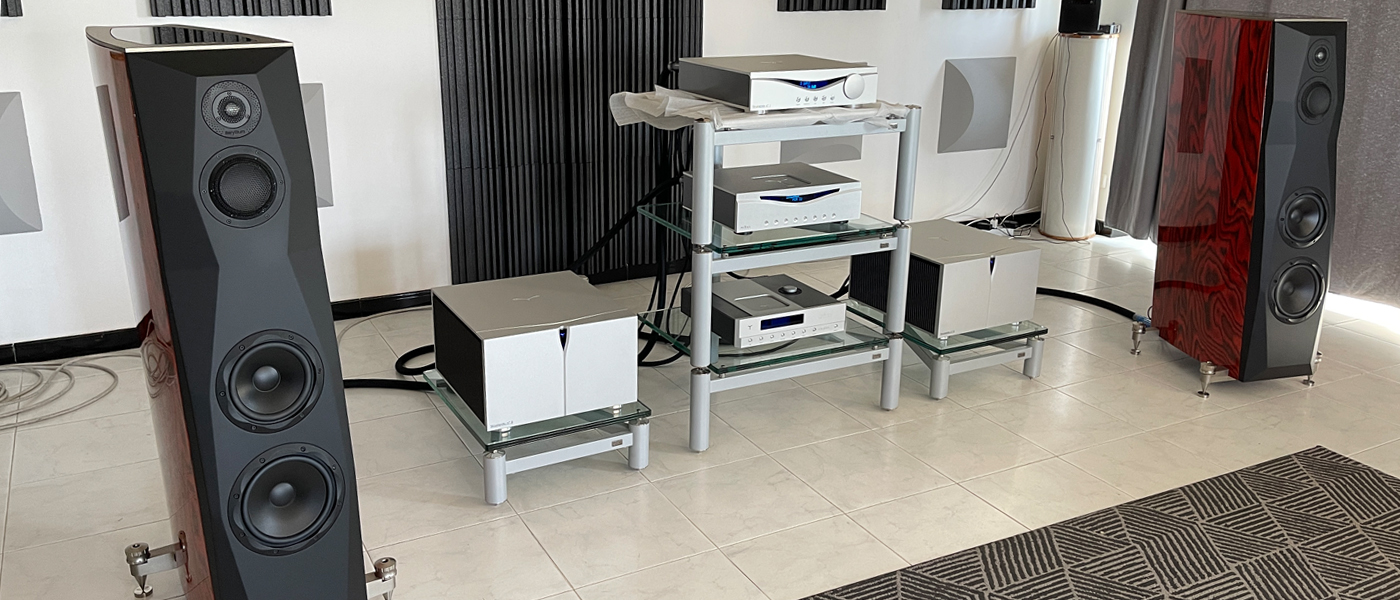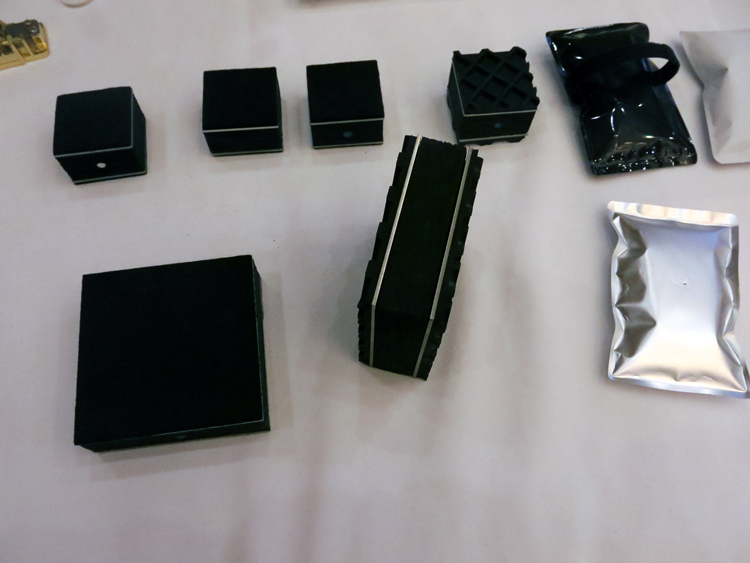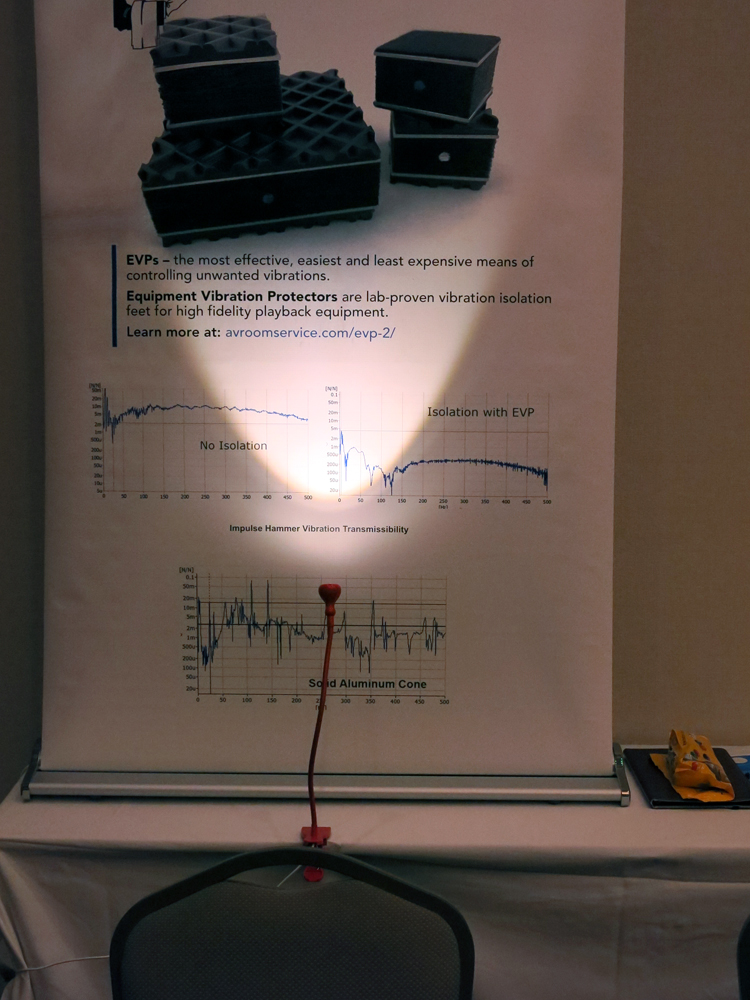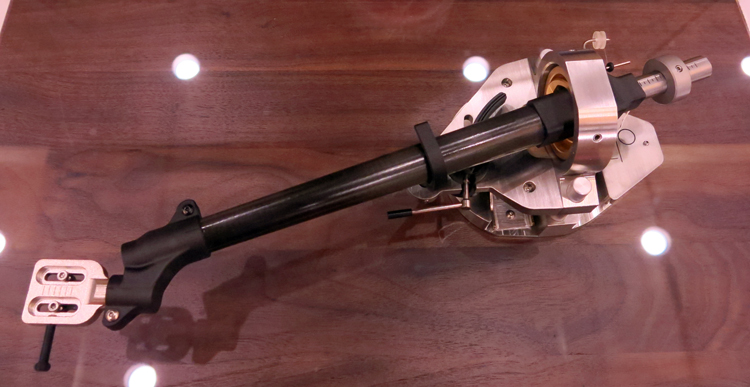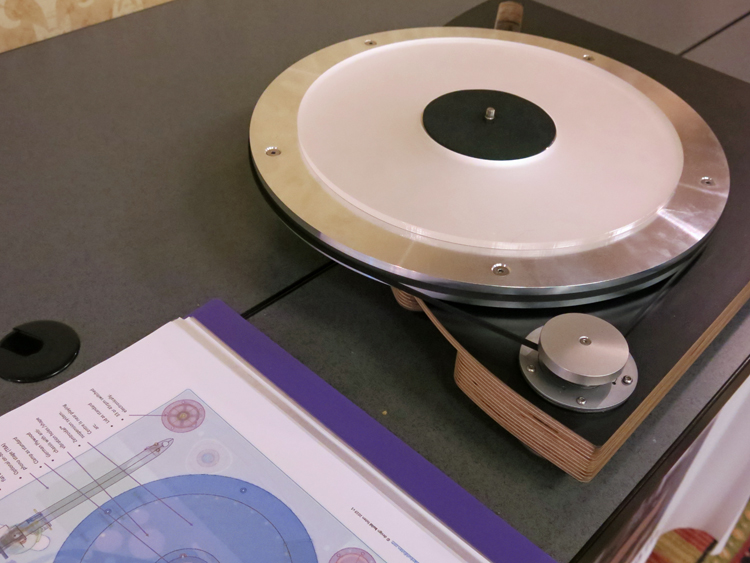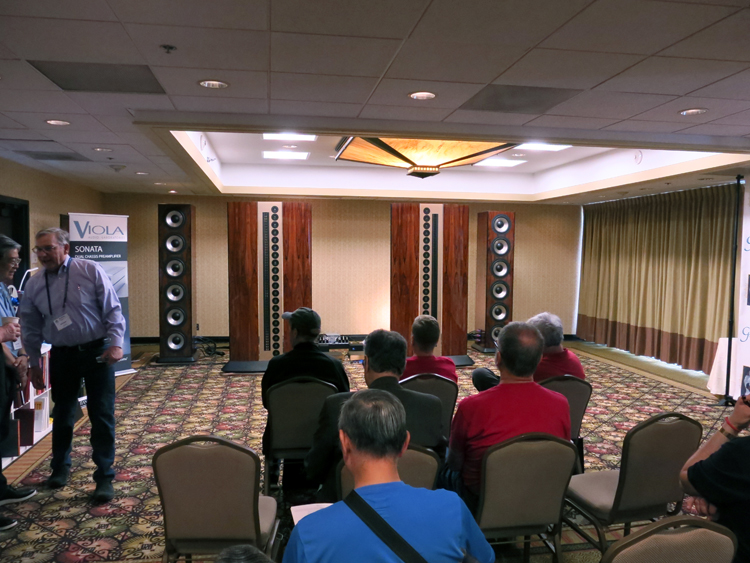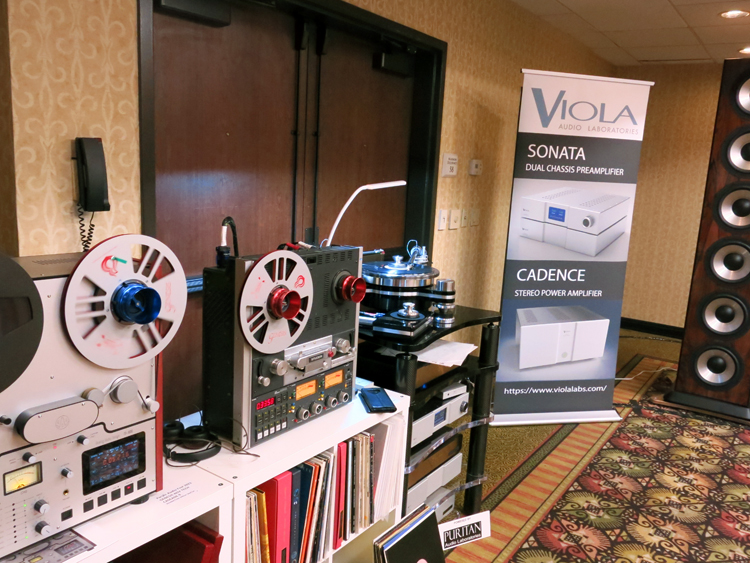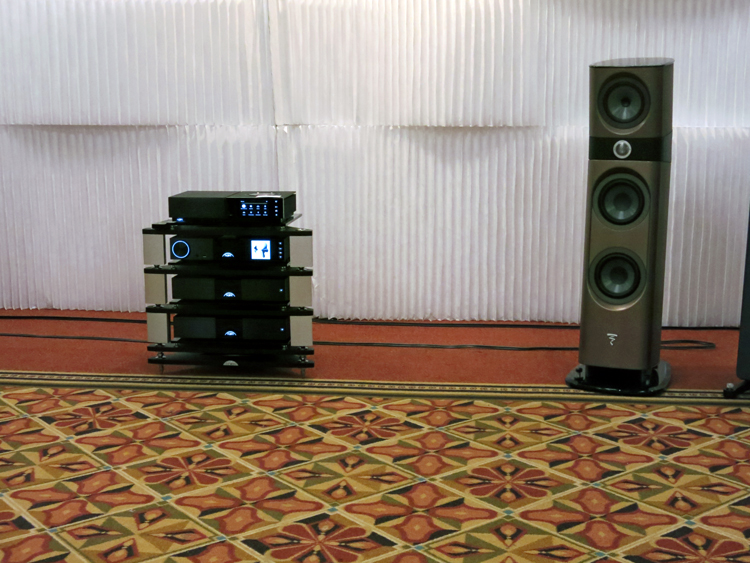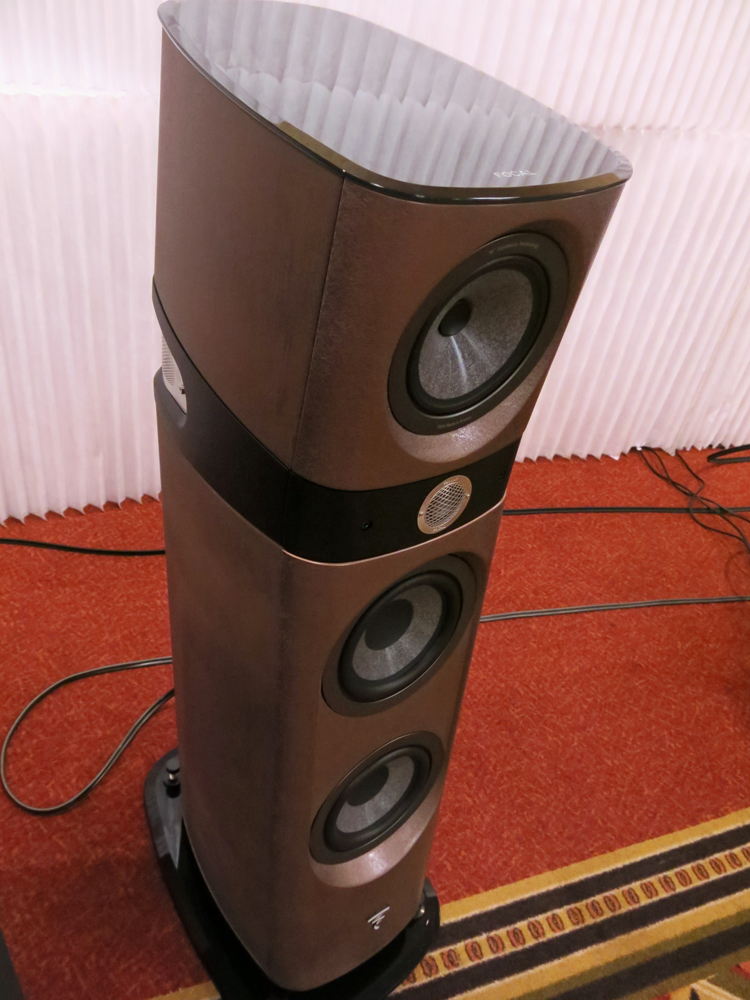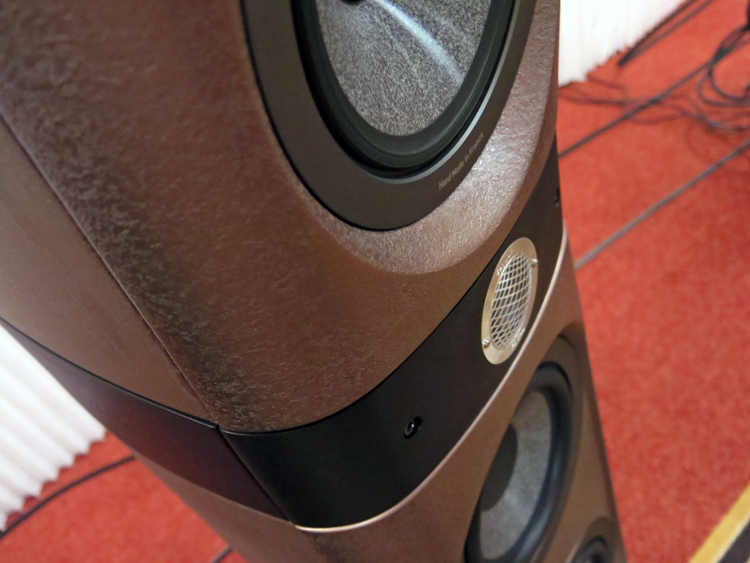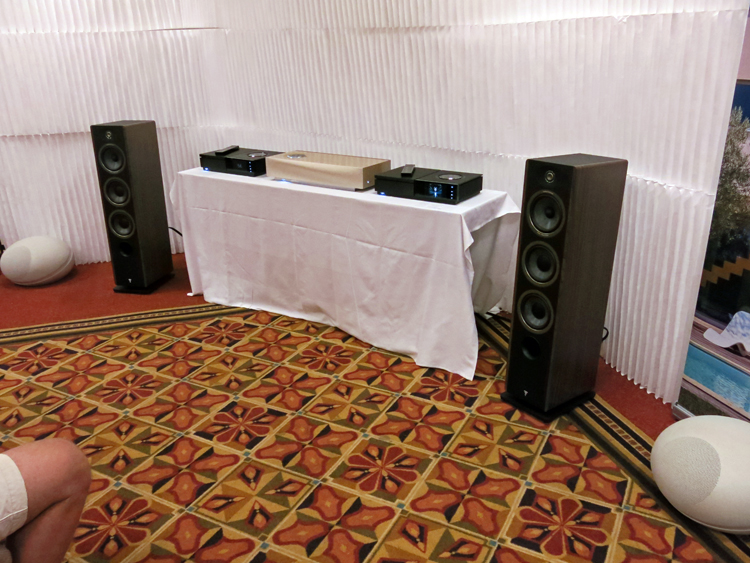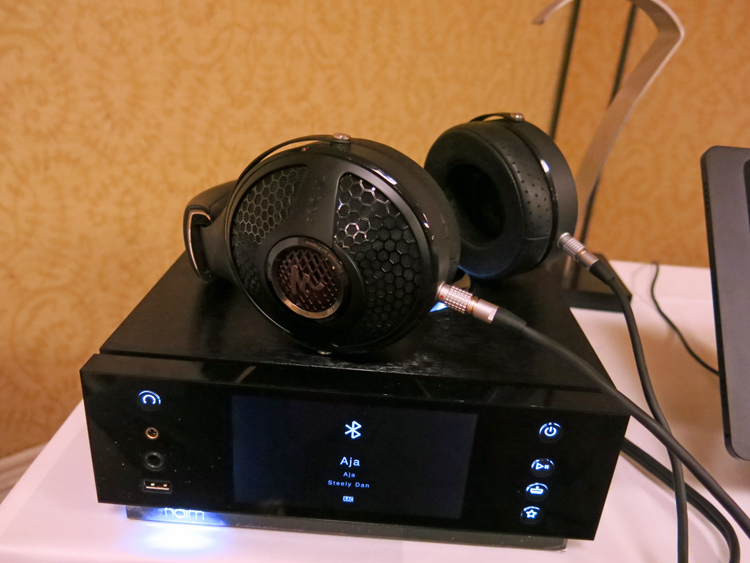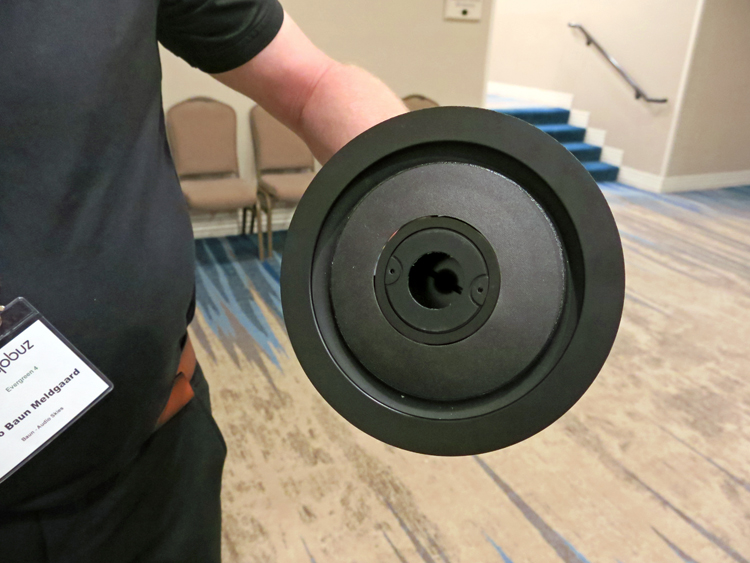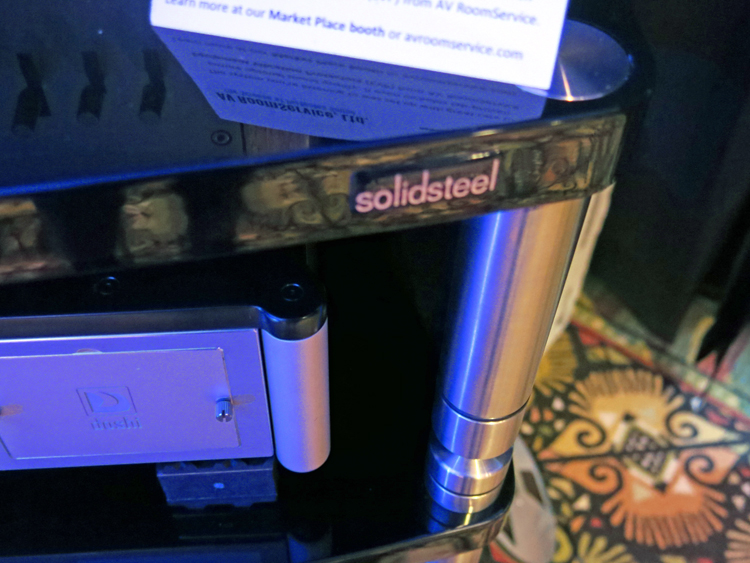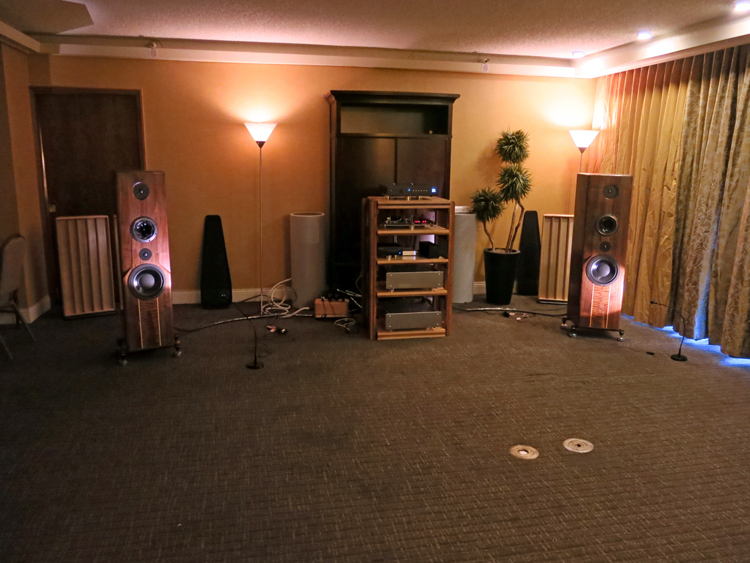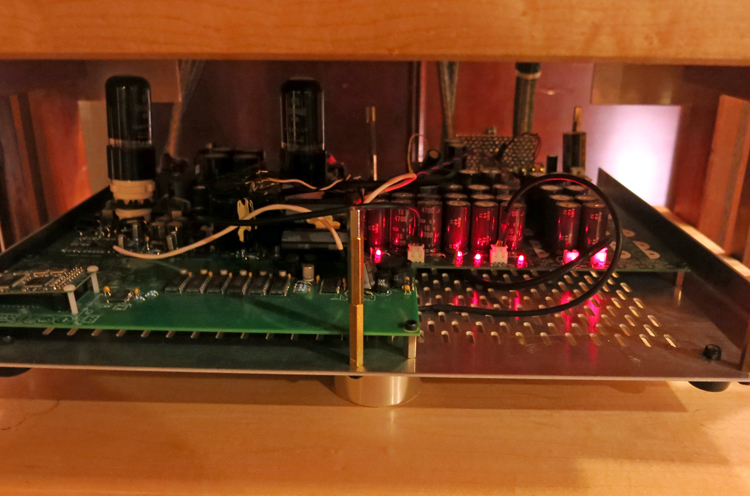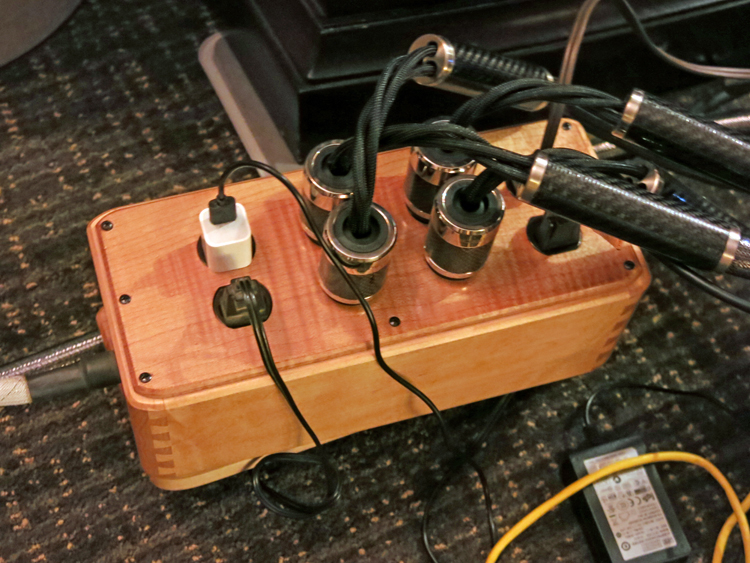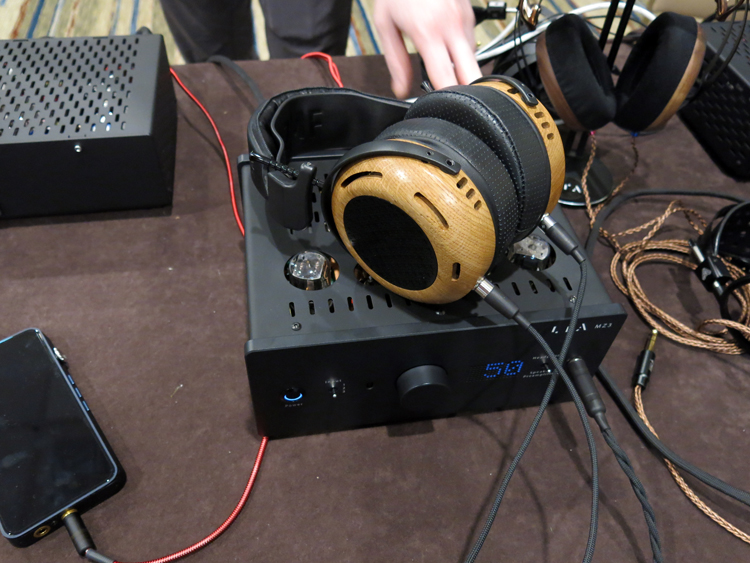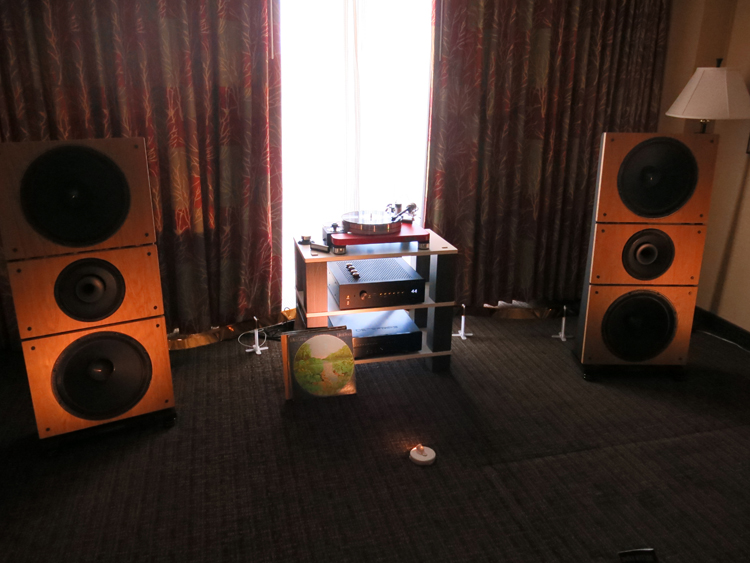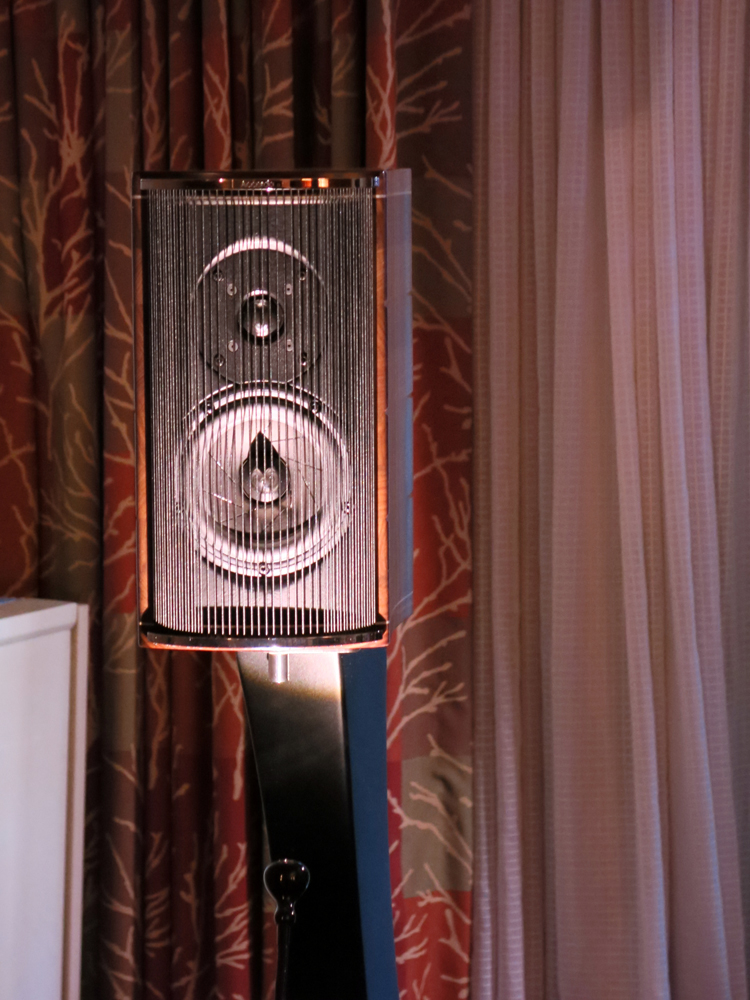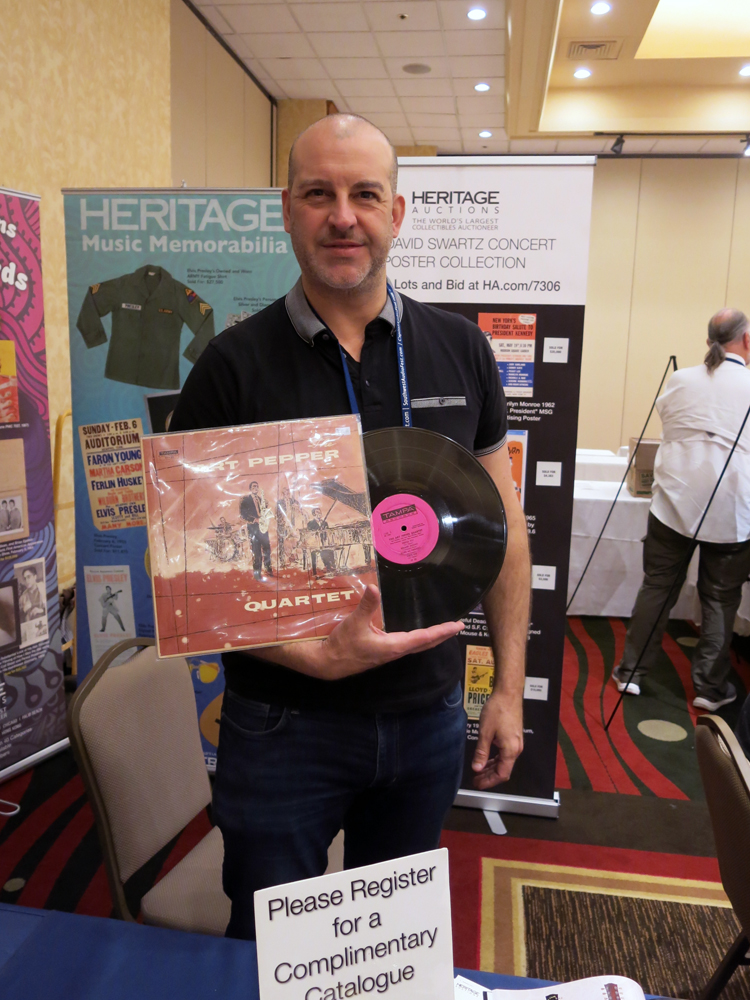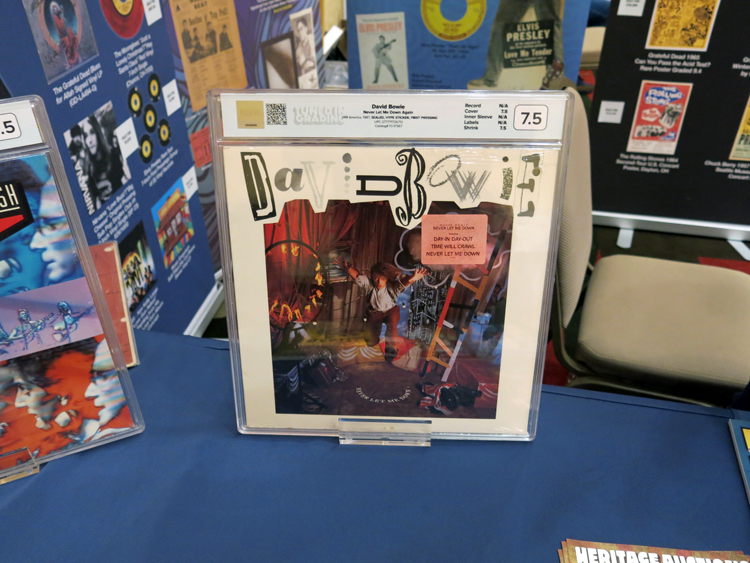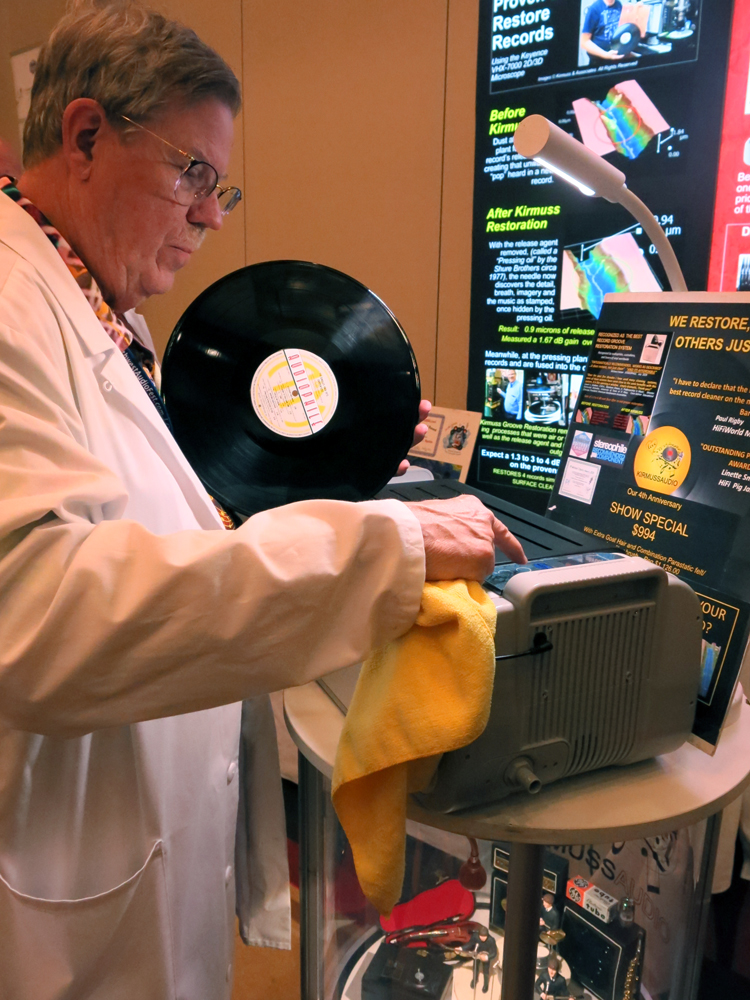Hello SECRETS readers! It’s time to turn our attention to the west coast again (namely Seattle) to present our coverage of the Pacific Audio Fest 2023. Longtime SECRETS reviewer, Rick Schmidt, is attending the show and will be bringing us a rundown of what catches his eyes and ears.
The show is being held at the Doubletree Hilton Sea-Tac Washington from June 23rd to the 25th and promises to be a well exhibited and well attended event.
The second annual Pacific Audio Fest happened! This year the date was moved up from late July to June 23-25. Erykah Badu was not at the audio fest…
But she was in Seattle on that Friday night so you know I was there too. Had to sit a long way from the stage but these pics capture what the show felt like, I think.
I used Eargasm earplugs which after a couple of shows, I can recommend. I had previously tried Etymotic which doesn’t attenuate quite as much – left me with ears ringing. Not good. Sound through the Eargasms is fine for a loud rock and roll show.
Back at PAF no earplugs were required, and the sound was much better even if the music and light show were never quite as exciting.
I spent a lot of time over-expressing my opinions to some of the fine folks in the vendor’s room so spare a thought for them. Before we get into the more-heated discussions, these are some folks whom I found myself in complete agreement with:
 Usually, I take a number of pics and get the lighting and compositions a little better than in this one, but I was so captivated by what I was hearing I completely forgot. Lautsänger applies a patented technology to headphones and loudspeakers. The technology has a rather mystical origin; a visit to https://en.lautsaenger.com is similar to going to an Erykah Badu concert as far as the amount of spirituality that is discussed. The principle behind the technology is chelonian sound figures which you have probably seen in pics or videos. It is the property of matter to organize itself into (beautiful) patterns when exposed to certain frequencies. From the website: “The core of the Lautsänger are the integrated cymatics organs, which provide new and unique properties. The Lautsänger is therefore no further improvement of previous loudspeaker technology. Rather, it is a manual modification to achieve a musical quality, as known from live performances.” You can see some pics of the shapes that might be involved at the website for the US importer: https://tonalitah.com – where the loudspeaker version of the technology is shown. The human behind that website, Frank Dauenhauer, described the shapes involved as similar to those involved in a violin.
Usually, I take a number of pics and get the lighting and compositions a little better than in this one, but I was so captivated by what I was hearing I completely forgot. Lautsänger applies a patented technology to headphones and loudspeakers. The technology has a rather mystical origin; a visit to https://en.lautsaenger.com is similar to going to an Erykah Badu concert as far as the amount of spirituality that is discussed. The principle behind the technology is chelonian sound figures which you have probably seen in pics or videos. It is the property of matter to organize itself into (beautiful) patterns when exposed to certain frequencies. From the website: “The core of the Lautsänger are the integrated cymatics organs, which provide new and unique properties. The Lautsänger is therefore no further improvement of previous loudspeaker technology. Rather, it is a manual modification to achieve a musical quality, as known from live performances.” You can see some pics of the shapes that might be involved at the website for the US importer: https://tonalitah.com – where the loudspeaker version of the technology is shown. The human behind that website, Frank Dauenhauer, described the shapes involved as similar to those involved in a violin.
I listened to both modified and unmodified Meze 99 Neos through a Benchmark DAC1. Unmodified – the Meze’s were smoothing a little bit of the grain that I associate with those early Benchmark designs but not enough to make me want to listen for long. With the modified ‘phones – a rather incredible relaxation that I could feel throughout my body. I stared at the tops of my forearms because they felt so relaxed. Frank mentioned that there was a double-blind medical study using the same modified/unmodified headphone sets as I was listening to that documented a measurable difference in arterial stiffness (akin to blood flow and blood pressure) for the participants that got the modified cans. When I wasn’t looking at my arms, trying to figure out how this was happening, I was looking at that DAC1 and thinking it was far more beautiful and luscious sounding than I remembered and I really wanted one.
The modified version of the more-expensive Meze 99 Classics were even better. Unfortunately, we couldn’t access any of the rock-n-roll kind of tunes that I prefer but a jazz trio version of The Police’s “
Walking on the Moon” was mesmerizing. Lautsänger has also modified Sonus faber and Focal headphones and are willing to work on any phones you might want to send in to them. So far the work has been focused on closed-back designs but there are possibilities for open-back as well. I recommended that they talk to the folks at ZMF headphones.
I should have visited Norman Varney of AV Room Service Ltd. after my experience with the Lautsänger phones but alas, it was before and we could not reach an agreement on what should be underneath your speakers. My point of view is that spikes or at least a rigid support are needed because anything squishy will allow the speaker to move back and forth in response to, as a reaction to (equal and opposite force and all), the motion of the drivers. When the driver is modeled and the speaker is voiced, the designers are all thinking and listening in terms of a rigid support, not a support that moves. A few years ago I tried some Isoacoustics GAIA speaker feet under my Daedalus pair and heard an unsettling fuzziness. These speakers are rather top-heavy and I could rock them back and forth (or side to side) when they were on these feet. Why do people hear an improvement with the same product? My suspicion is that those folks have not done the heroic vibration isolation of their source components and amps that I think is necessary and so by decoupling their speakers from the floor they reduce the vibrations that are messing up the source.
Norman’s point is that spikes capture rather ugly vibrations in the speaker cabinet (he’s got pictures) and those cause problems for the speaker and even with spikes those ugly vibrations will couple to the floor at some level.
Point taken. But at what level will said coupling occur? So, round and round we went. I have no doubt that the AV Room Service Equipment Vibration Protectors are superior to the DIY stuff I have going under my source components and am keen to try them sometime. The EVPs use layers of fiberglass which it turns out is an excellent and long-lasting vibration absorber. The sizes are tuned to various weight requirements. The shiny pillows in the pic are for cable isolation. To get speaker wires off the floor, use the mildly-conductive variety. For cable-to-cable isolation, use the non-conductive.
For certain all of our discussions were too absolute. Each speaker, speaker placement, and room is different. The kinds of and magnitude of coupling that might or might not occur and might or might not be beneficial with different speaker constructions and materials and floor materials and all the rest is somewhere between not easy and impossible to figure out ahead of time.
The state of the art for computer help with such problems is Finite Element Analysis (FEA) but as Joel Durand of Durand Tonearms told me, FEA is fine and dandy (FAD) when you are talking about a single material but the method breaks down when you join one material to another. So Joel does science the old-fashioned way, trial, and error. That’s how he came to know that stainless steel is superior to aluminum (or other metals) for tonearm construction. It’s beautiful as well.
But even the type of stainless steel makes a difference so yes, lots of trials. The arm tube is carbon fiber, and the headshell and the arm tube connection to the gimbal bearing mechanism use a proprietary material that is also partly carbon fiber. Those pieces are made using a custom 3D printer. The bearing mechanism is designed for vibration isolation (see above). The headshell is removable but wires attach directly to the cartridge so the process of changing cartridges is eased somewhat but the anxiety of working with tiny, delicate wires will remain. If you can afford a Tosca ($16000) you might be paying someone to do all that fiddling so less anxiety.
Like other vibration control measures, it’s hard to know how much difference a tonearm will make. I put that question to Simon Brown in the Genesis room. Simon designs The Wand tonearms and turntables in New Zealand (thanks for making the journey to the PAF Simon!). By his estimate, the cartridge “sets the tone” for your analog playback front end and accounts for 40% of the sound. Probably we should interpret that as 40% of your enjoyment of the sound. The tonearm, as the substrate for the cartridge, sets the resolution of the system and also accounts for 40% of the sound/enjoyment. The turntable accounts for the remaining 20%. That’s 100% enjoyment, if you want more than that you’ll need an amp that goes to 11.
Simon was demonstrating a prototype of the newest version of The Wand tonearm, the Dark-Light. Mounted on the 14-5 turntable. The price is expected to be $6300 for the combo. This would include the standard switch mode power supply. A rechargeable battery supply upgrade is also available.
I spent a long time talking to Simon and I can tell you that he puts as much thought, love, and experimentation into this rig as Mr. Durand does into the Tosca.
 The bottom-most board seen here is a standard butcher block being used to improve the shelf. The next two are the turntable. The topmost layer is suspended from the first using elastic string. The top layer (board) of the plinth is not a rectangle like its bottom-bunk brother. Rather it is cut away in a gentle arc, you can see it disappearing under the 14” platter here.
The bottom-most board seen here is a standard butcher block being used to improve the shelf. The next two are the turntable. The topmost layer is suspended from the first using elastic string. The top layer (board) of the plinth is not a rectangle like its bottom-bunk brother. Rather it is cut away in a gentle arc, you can see it disappearing under the 14” platter here.
Or, by itself and upside-down here.
The platter is 14” because the additional diameter adds more angular momentum (i.e., consistent speed) as compared to a same-weight (about 30 pounds in this case) platter of smaller diameter. Simon told me how much more but I couldn’t scribble my notes fast enough to keep up. Also, he said, it looks cool. I tend to agree. In the vertical dimension, the platter is made of alternating layers: aluminum, acrylic, aluminum, and acrylic. Because the materials absorb/dissipate unwanted vibrations in different ways and this combination has proven to work well. Even though this is a belt-drive table, the DC motor is speed-corrected using a system that starts with an optical sensor that is watching certain markings on the bottom of the platter (no pic, sorry). The speed control is done at a leisurely rate by electronic standards. 3Hz, or 3 samples per second if I’m understanding correctly. This means that any changes in speed that the system needs to make will be well below audio frequencies.
As can be seen in the pic of the bottom of the plinth, there are holes. These are there so that the center of gravity of the plinth will be directly underneath the position of the needle as it tracks the record. Simon’s finger is on the spot in the pic.
The motor is placed so that the pull of the band will have the most direct effect on that same spot, where the needle is. Probably that’s hard to picture but with my highly tweakable Nottingham Space Deck, it means pulling the motor from its standard position behind the platter to the front corner, a placement that is diagonal from the tonearm mount. I heard the difference when I did this.
A phono stage designed by the late Gary Morrison (Plinius and Pure Audio) can be fitted inside the plinth or can be purchased as a standalone unit.
The Dark-Light tonearm is a carbon fiber tube with a unipivot design but some additional bearings are added for stability. I couldn’t see where these are so I don’t quite get what that means but I’d love to hear how this all adds up. We’ll see if I can get one for review. The little bit I heard when I came into the room was quite promising.
But the room was being shared with these guys…
…with alternating presentations on the hour. Those monster speakers require a lot of introduction before music is played so I headed to the Focal-Naim room where Sopra N2s were sounding brilliant driven by a Naim 200 series stack.
Those Sopras have the optional hand-applied plaster finish. To me, they are the color of copper, which is a color I happen to love. I don’t know if that created some favoritism in me but this system was a candidate for my favorite at the show. Focal has been doing this for a long time with the constant refinement of their products and it shows. The sound was seamless and effortless and with deep bass beyond what you would think from the size of the drivers.
This other system featured Focal’s Vestia speakers and while the sound was not as tight as with the much more expensive Sopra 2’s it was still impressive.
But they were simply a lure. On the second track, unbeknownst to us listeners, the sound started coming from the oval-shaped outdoor speakers that you see on the outside. “The Stone.” The little stand-mounted satellites were not in use. At first, I was just thinking that the Vestia speakers had a really wide soundstage. The Stones sounded practically identical. These amazing dinosaur eggs are okay to operate from -15 to +95 Fahrenheit. Now, I may be crazy with all of the things I do to get good sound, but I’m not listening at -15 degrees. 32 is my limit.
I had to stop to listen to my favorite headphones, the Utopias. Just as I put them on… “Ajahhh when all my dime dancing is through, I run to you”. Yes, that is how I feel about the Utopias.
In the hallway outside I met this fella, Benno Baun Meldgaard, who is living the life.
He is currently designing the upcoming Hydra speakers. On display here is the finished cabinet, made 100% from a proprietary material that is harder than steel, weighs about the same as aluminum but has 10 times the damping. The enclosure pictured here weighs 250 lbs. The midrange and tweeter will be in a coaxial arrangement with the midrange cone inverted so that the tweeter dispersion does not suffer.
The magnets are neodymium in a proprietary arrangement. The woofer has a 40mm pole piece which means an incredible amount of distortion-free excursion will be possible. All could be yours for $150,000 but you are not the target audience, even if you have that kind of scratch. These speakers were commissioned by a wealthy person who has a lot of faith in Benno. Livin’ the life. Living. The. Life.
In a nearby room, perhaps the reason for that faith, the Gamut Audio Zodiac speakers, designed by one and the same Benno Baun Meldgaard, were filling the room nicely though I think this room suffered from a lack of sound treatments.
In the nearby Joseph Audio room, the Pearl Graphene speakers (a bargain at 1/3 the price of the upcoming Bauns) sounded heavenly, driven from a reel-to-reel tape player made by Doshi Audio. The preamp and mono blocks were also by Doshi.
I thought the solidsteel racks were handsome and so wanted to wrap on them to see just how solid they are but then I remembered this thing that um, a friend of mine did. It was our dance hall days, out at a club, the dance floor was packed as Nine Inch Nail’s “Head Like a Hole” was playing. This guy, my friend, gets over-excited and jumps up and slams the wall with both hands. Except, it wasn’t a wall so much as the tower where the DJ commanded the dance floor from. So, the record skipped, hey, it still landed on the same track, just a little later. How was my friend supposed to know the DJ tower was so flimsy?? Anyway, after an evil stare-down from the DJ above, my friend, and everyone else, just kept dancing. So, not a problem really. But, I’ve always remembered what my friend did so I did not wrap on the shelves in this case.
There was no Nine Inch Nails playing in the Bella Sound room:
But the more I think about it, the more I want to hear “Head Like a Hole” on electrostatic speakers. Not unexpectedly, what was playing was some harp music. Exceptionally clear as would be expected but I noticed that the speakers were getting some dynamic-driver help.
The amplification chain is all-new from Bella: The Hanalei 700W Monoblock Amplifier, the Kahili 800W Stereo Amplifier, and the Hana Power Conditioner, all getting power from Kaula2 AC cords.
Meanwhile, in the LTA + Daedalus room, the streamed music is changed about every minute. This can be less than satisfying when you’re hearing a song you like. The tubed amplification chain was by LTA (Linear Tube Audio). Their MicroZOTL Preamplifier (Level 2), and pre-production prototypes of an R2R DAC and 100wpc monoblocks. The DAC was intriguing and smooooooth. There was a depth to the mostly rock and roll tunes that I don’t often hear in a digital source.
The wires were all by WyWires, the music server was from Small Green Computer, and my favorite, the speakers were the $27,000 Apollo 11 v.3. These represent a bit of a departure for the line. The 4.5” Fostex midrange that has been the standard in all of the Daedalus speakers is replaced with another one that is also from Fostex but is 6.5” and made from a unique material. Lou Hinkley (Mr. Daedalus) modifies them to his liking. Overheard a fella walking out: “Best midrange ever.” As with the sound in the Focal-Naim room, the speakers disappeared – seamless from top to bottom. A little more ease to the sound in the Daedalus room. Hard to get up and go to the next one.
The power distribution box ($2495) features woodwork by Daedalus and wiring by WyWires. It will catch your eye. The outlets are Furutech, and the internal wiring is in a star-ground configuration with equal wire lengths and construction to each outlet.
The room was full of room treatments which I’m sure accounts for some of the listening pleasure.
LTA was also showing off their headphone amps near the reception desk.
Pictured here is the MZ3 which can also serve as a preamp. It was driving these beautiful and beyond comfortable ZMF headphones. The MZ3 and its companion on the table, the Z10e are dripping with build quality. The volume controls are of the relay sort – meaning you can hear relays clicking as you adjust the volume and that only adds to the substantial feeling these amps have. The Z10e can drive electrostatic headphones and (dynamic) speakers via speaker terminals on the back. In other words, it’s an integrated amp.
It’s a good thing I don’t require any headphones or headphone amps because it is hard to resist these things. If I could get ZMF cans with the Lautsänger modifications. I would have to do it. Just thinking about it is changing my physiology.
I had to be re-educated on the amount of innovation in the LTA line. Chief among the breakthroughs is a brilliant method of reducing the need for massive output transformers that you usually see with tube amplification. This is done by putting the audio signal on top of a 250MHz carrier – as is done with radio waves – so that the transformer sees an easy-to-deal with, high frequency. The high frequency is also easy to filter off after the transformer so that you get the audio signal only. I like this so much!
Jaguar Audio is a hi-fi store from nearby Belleview, WA. The Avantgarde Duo SD Gen3 were as striking as ever and were powered by an impressive stack of electronics.
These speakers have their own internal amps – customized to the compression drivers used in the horns. On the rack were a T+A SD 3100 HV DAC/Streamer (“Super DAC”) and a Phasemation CM-2200 preamplifier. The music was male and female vocals with little instrumental accompaniment. The sound was striking. Horns do a thing. Really big horns do it more. I’d love to hear some rock-n-roll so I could compare.
The Pure Audio Project room won the best lighting award. I’ve been Photoshopping most of the photos so that the goods can be seen most clearly but I couldn’t do it to these. This is the gorgeous VPI Scout ($3300).
Perhaps due to the analog source, this was another room that I could have stayed in all day. The open-baffle speakers are by PureAudioProject: Trio15 w/Coax10 ($8390). Linear Tube Audio was all over the show. In this case, powering the speakers with their LTA Z40 integrated amp ($7650). The sound was easy and natural.
I’ll spare you the picture I took of the newest ModWright gear in the Seattle HiFi room – because it was blurry! It was late in the day. I did get a pic of the extraordinary Franco Serblin Accordo speakers.
These compact 2-ways were filling the room and leaving little to be desired. Cabinet resonance control was again the name of the game. In this case, done with Aluminum and Magnesium parts along with the beautiful curved wood.
The unseen ModWright gear featured the new KWA 99 MOSFET Monoblocks ($7500). That’s right, no tubes in these. The rest was as tubed as ever, the LS 99 pre ($6500) and the PH150 Phono Stage ($9750). The preamp and monoblocks are new from ModWright so those are introductory prices. The turntable was a gleaming Transrotor with an SME tonearm fitted with a Dynavector XV-1t.
My question about the cartridge was simply, “Can I have it?”, the answer was “No”. Unless I paid for it. Sigh. It was a lot of new gear for my ears but I was trying to sort out what this cartridge might offer over my Dynavector XX2. Listening to “Freddie Freeloader” on one of the recent reissues of Kind of Blue, I could hear leading and trailing parts of Wynton Kelly’s piano that made me realize there was more to this track than I knew. And I’ve heard it hundreds of times.
The ModWright stack was as impressive as ever. The MOSFET amps seemed like a departure from their house sound – which has always had a certain magic. The MOSFETs are more authoritative, as expected. I would have to listen a lot more, and not in a hotel room, to really know the differences.
Back in the merchant’s room, this guy had a way for me to afford that Dynavector cartridge.
That guy is Ari Crane and he’s holding a record he bought a couple of tables over. He was telling that merchant that it should cost more, but he couldn’t talk him up. Ari’s business is auctions – of all manner of collectibles – so increasing the price of things comes naturally I suppose. It was nice to see all the goodwill in the exchange: “You should charge me more!”, “No, it’s ok, go ahead and enjoy”.
Anyway, finding pristine copies of really old records is hard. Ari says we can all make our fortunes easily by buying unopened copies of just about any decent record off of Discogs and then having it archived like this one was.
The record quality is determined by a panel of listeners – see the “7.5” up there in the corner, then a super high bit rate digital copy is made for your listening pleasure and it is sealed in a hard plastic case to last forever. The value will go up, and up, says Ari. So you too – WAIT! WAIT. Wait. Wait. Wait. Wait. Wait. Wait. Wait. Wait. Wait. Wait. Wait. Wait. WAIT! Wait. Ahem. Did you say “The record quality is determined by a panel of listeners?” As in, I could get paid to listen to records? And then opine about the sound quality? Ladies and Gentlemen, we have the answer. I guess you could say that’s what I do already as an audio reviewer but I’m not making retirement kind of bucks with this gig. The way Ari talks about these records I’m thinking the pay will be much more substantial. Stay tuned!
Ari’s company is Heritage Auctions (https://www.ha.com/) and his enthusiasm is boundless. I suggest looking at that site; you might see some stuff that you have copies of being sold at auction prices.
And finally, also in the merchant’s room, and presenting a lecture, was Dr. Charles Kirmuss.
Dr. Kirmuss is famous for strong statements about record cleaning. Most everything else is crap is a good way to paraphrase it. He has some science to back up what he is saying – which is very very welcome in the community. He also has some hyperbole. One thing that is good to keep in mind regarding “science”. Absolutes are rarely the correct answer. So, when Dr. Kirmuss said that the Audio Desk cleaner does “Nothing”, I was and remain skeptical of that evaluation.
His system might well be superior, but everyone agrees it is a lot of work.
His most technical claim is that the plastic in records naturally has a positive charge. And, water molecules have the same. So, when you use ultrasonic waves to create little bubbles that are meant to burst (cavitate) on the surface of the record, it won’t happen because the like charges will repel. The answer is to apply his solution before ultrasonics. The solution will change the charge on the record surface. Okay, the bubbles will have to remove that solution before they get to the record surface though. Maybe it washes away and leaves a negative charge for long enough to get the cleaning done. We didn’t get to that level of detail.
His specific complaint about the Audio Desk was that the ultrasonic transducer was not of sufficient strength, and not pointed at the record from both sides as in most of the newer cleaners. Might be a problem. I think the general idea was and is to flood the solution with bubbles and some of those bubbles make their way to the record surface, or perhaps only near the record surface, and when the bubbles collapse the force will pull the gunk from the grooves.
Anyway, I could go on, the good Doctor certainly does. I’m not ditching my Audio Desk yet. It was the only option when I bought it. I think it is the most expensive – and most automatic – option these days.
A panel of audio show organizers and writers (Left to right: Dave and Carol Clark of Positive Feedback, Marjorie Baumert (RMAF, and now an advisor to other shows), Gary Gill (Capital Audio Fest and Pacific Audio Fest), Lou Hinkley (Pacific Audio Fest), Mark Freed (Axpona)) were interviewed by David Solomon of Qobuz.
Building and keeping the community of audio designers is in the hearts of all of these folks. I think it’s wonderful that someone like Lou, whose products compete with all of the other speakers at the show, wants to do this.
All talked about the need to get more young people to know about and come to these shows. David told the story of a very young girl, with her dad at an audio show, requesting a song from “The Little Mermaid” and of course, simply floored when it came out of whatever massive system they were in front of. Something to think about.
Next year’s show is planned for the first weekend in September. I don’t know if that means Labor Day which falls on the 2nd. Either way, it really is a fun time, with lots of fanatical folks to talk to and great music of course. Highly recommended.


